Interested in cultural heritage, its protection and preservation? Read our news, subscribe to our newsletter, follow us on social media.
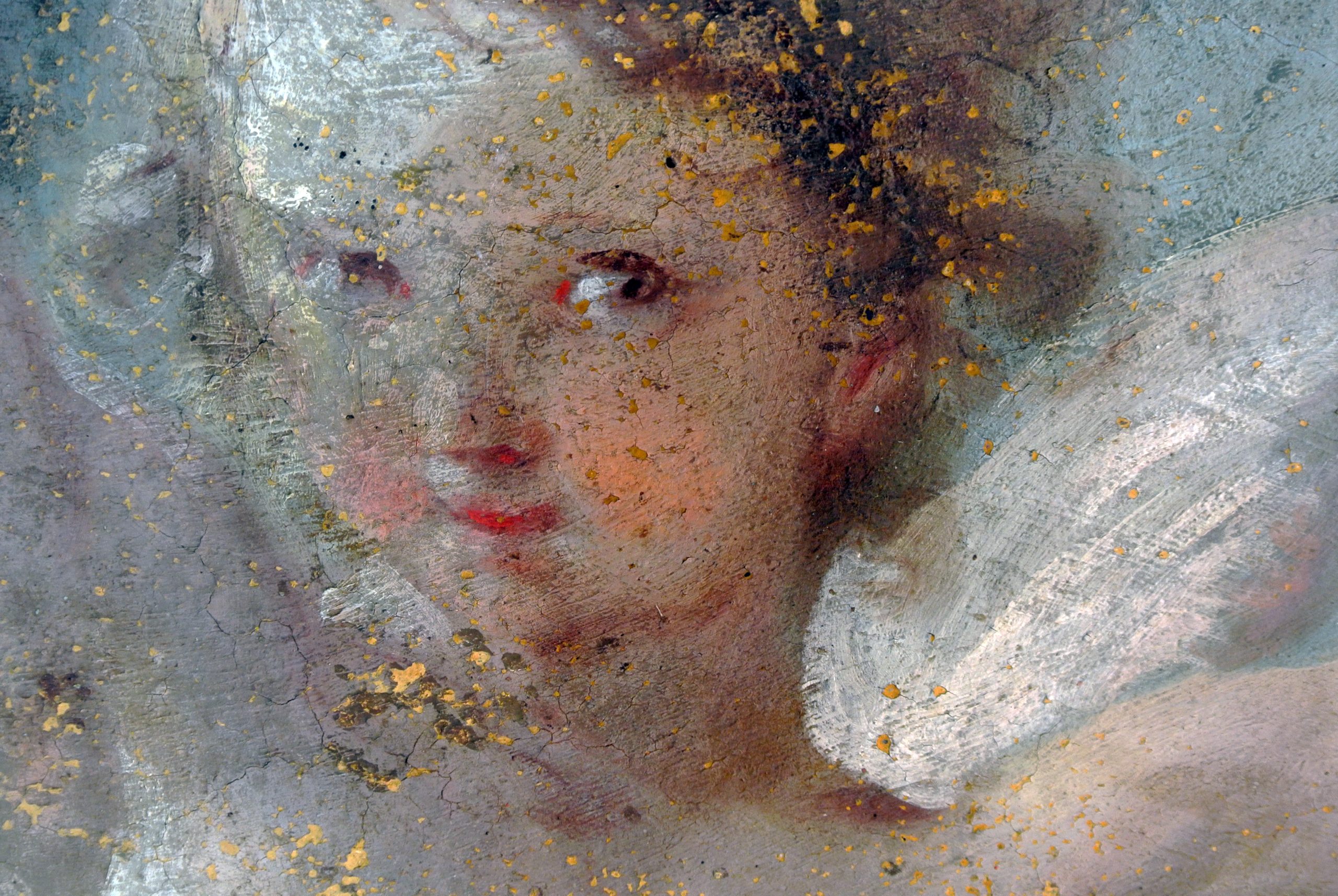
Why work with us?
Cooperation z us to you facilitated by active Contribute to k Conservation important historical, architectural monuments, archaeological ostalini, Artistic part of and traditions.
Examples of good practice

Wall paintings of St. Nedelja (Podrebri near Polhov Gradec)
In the summers of 2023 and 2024, the Department of Wall Paintings and Mosaics conserved and restored the painting of St. Sunday on the south wall of the Church of St. Elizabeth in Podrebro near Polhov Gradec. The Gothic painting from the first half of the 16th century was discovered and conserved and restored for the first time as early as 1966, when a protective roof was also put over it.

Train station in Nova Gorica
The railway station is located right on the Italian-Slovenian border, on the western edge of Nova Gorica's town centre. The most important station complex of the Bohinj line in the territory of the present-day Republic of Slovenia, it has been registered as an immovable cultural heritage site since 1996.

Kostel Castle and Market Square
Kostel Castle and Kostel Market Square are located in the landscape of the same name in south-eastern Slovenia, about 2 km from the former main road connecting Ljubljana via Kočevje to Delnice and on to Kvarner Bay. The naturally well-protected steep hills and the proximity of the Kolpa River offered favourable conditions for settlement in prehistoric times. Probing archaeological research carried out by the archaeologist M. Hirschbäck-Merhar has shown that people lived here as early as the Copper and Bronze Ages.

Catharija, Church of St Nicholas
The Church of St Nicholas (Nicholas) in Kataria is one of the seven branches of the Moravian parish. The church is known not only for its wall paintings, but also for the remains of the anti-Turkish camp.

The bell tower of the Church of the Holy Name of Mary in Dobova near Brežice
The neo-Romanesque Church of the Name of Mary in Dobova near Brežice was built on the site of an older predecessor in 1864-1865 and represents one of the most prominent feats of church architecture in the second half of the 20th century. It is one of the most significant examples of the church architecture of the 19th century in Styria.

Mestni trg 27 and Ciril-Metodov trg 21
In 2024, the renovation of the house at 27 Mestni trg Square, the former headquarters of the Ljubljana Historical Archive, and the premises at 21 Ciril-Metodov Square for the needs of the Ljubljana City Administration was completed. The renovation combined the preservation of historical elements and upgrading with 21st century solutions. The basic guideline was to improve and approximate the original design and to relate it to the comprehensive renovation of the 1960s under the direction of the Institute for the Redevelopment of Old Ljubljana.

Piran Lighthouse
The mysterious history of the buildings that make up the monument still hides many unsolved questions and riddles under its cloak, and in many details it is still wisely silent. The Piran Lighthouse remains an indispensable and picturesque finishing touch to the Piranese skyline at the tip of the Piranese promontory.

The Sign of Mary
In 2024, the Department of Stones and Stucco of the ZVKDS Restoration Centre completed the comprehensive restoration of the Marian Marian Sign from Radlje ob Dravi, which began with the preparation of a conservation plan in 2018 and continued with surveys and dismantling in 2020.

Relief work on the House of Culture
The relief, the work of sculptor Jakob Savinšek, is located on the façade of the Cultural Centre in Črnomelj. It dates back to 1954 and depicts scenes from the life of the Belokran people, war scenes and a self-portrait of the sculptor himself.

Srževica - Conservation of a stone marker
We have kept to the principle of minimum intervention, so we have not reconstructed the missing parts. In order to slow down the degradation process a little, we placed the marker under the choir of the parish church in Ponikva, close to its original location.

Side altars in the Baptist Church
After the procedure, the difference between the two altars is less disturbing. The fact that the left altar was restored in the last century obliges us to preserve the intervention of that time, which was carried out by the hand of our predecessors in a manner appropriate to the time and the circumstances, and thus to the history of the altar story.

Paintings in the presbytery of the Sorrowful Mother of God
The church is an important monument of art, especially for the paintings in the chancel and on the nave wall. The paintings are the work of two artists. The first, a Gothic-oriented artist, painted the vault of the chancel shortly after 1472, while the second, already strongly influenced by the Renaissance, painted the chancel walls and the triumphal wall of the nave in 1500.

Servite Monastery
The Servite Monastery is the only monument of national importance in the historic centre of Koper. Since 2010, the University of Primorska has taken over the management of the building and in 2020 started a thorough renovation, which is being carried out hand in hand with the archaeologists of the CPA ZVKDS. The archaeological excavations in 2024 have expanded the insight into the picture of the development of the site, which was already outlined by the surveys in 2011 and 2022.
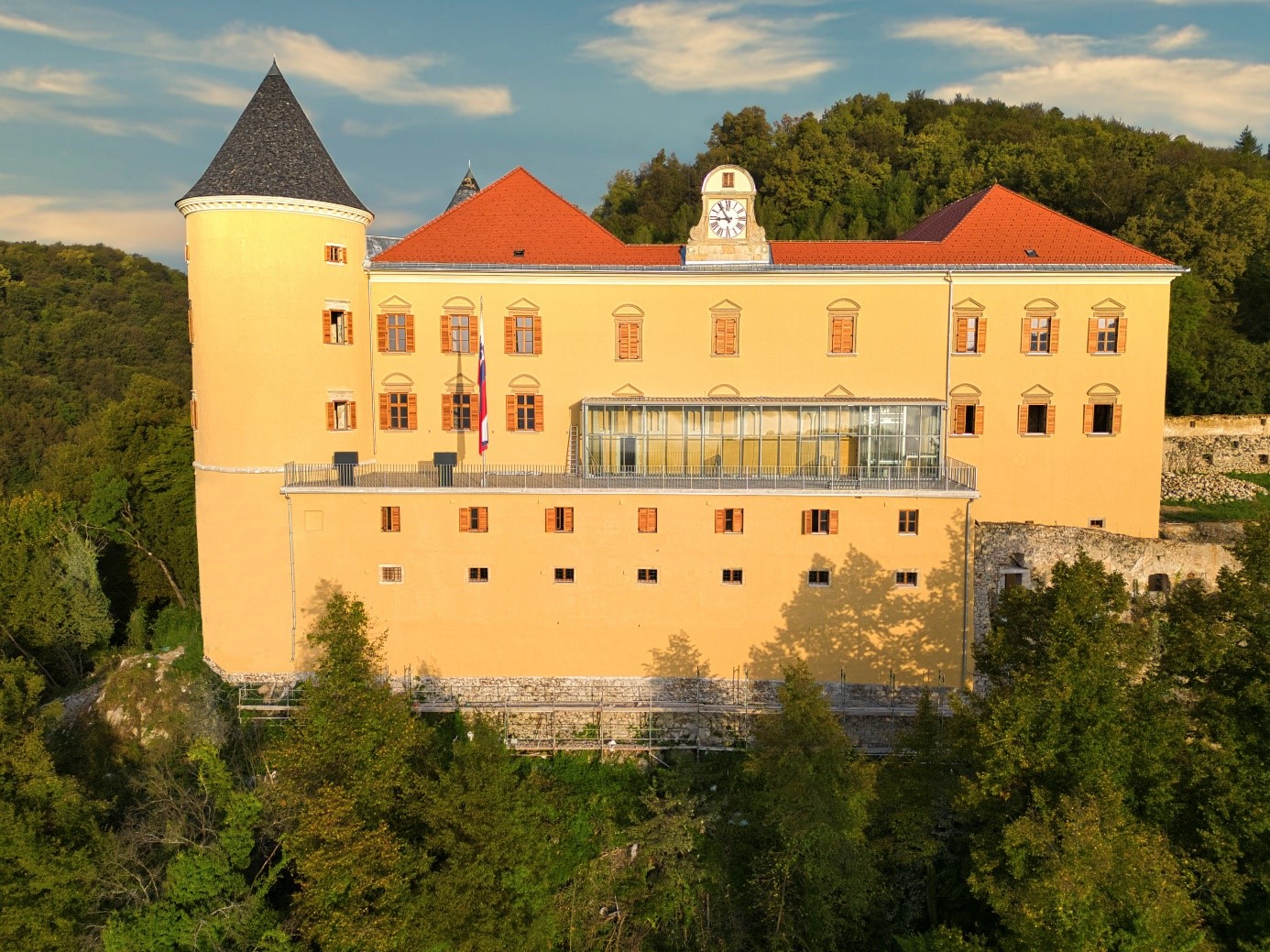
Podčetrtek Castle
Podčetrtek Castle is one of the oldest castles in the country and formed part of the defensive line against Hungary (Croatia). Despite its venerable age, which dates back at least to the Romanesque period, it is mentioned directly in the sources quite late (1261 as castrum Lansperch). It stands in an extremely dominant position, above the village of the same name. In its long history, it has changed hands and changed owners, but it is the important noble family of Attems from Styria, which is responsible for the thorough Baroque-style renovation, followed by a major renovation in 1874, that has most influenced the castle's architecture today.

Globočice near Kostanjevica na Krki
The area of this survey lies to the south of the urban island, outside the registered heritage unit. Unfortunately, the excavation of pits for the construction of houses, infrastructure and courtyards has destroyed remains dating from the Roman period. Fragments of building material and ceramics were visible on the freshly excavated surface.
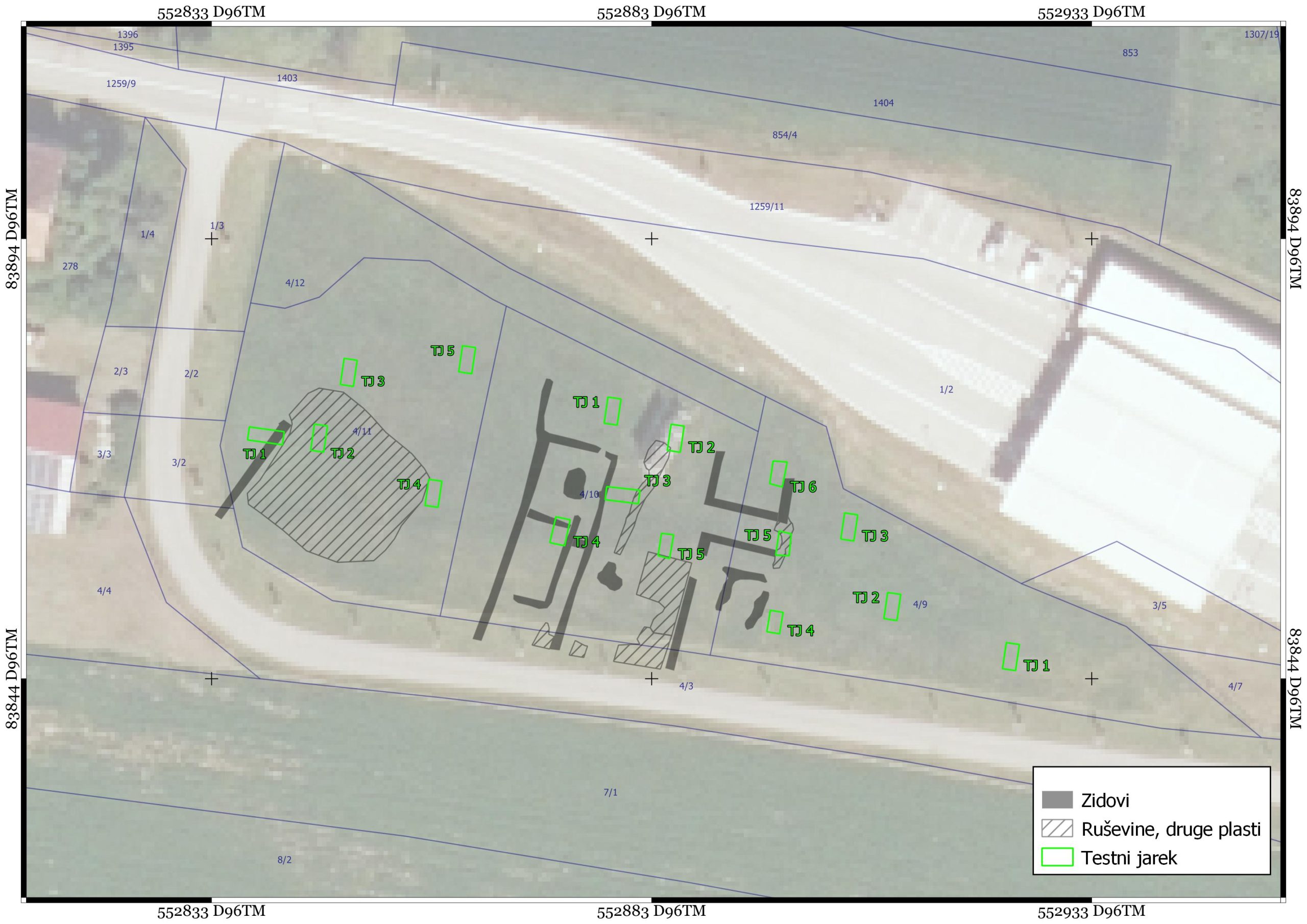
Roman remains
Poorly preserved remains of Roman-period buildings have been uncovered. Most of the walls of the Roman buildings were very poorly preserved due to looting and intensive ploughing. Some walls were only identifiable in robber trenches or larger stone graves. During the archaeological excavations, few small finds were uncovered. The findings are mostly from the Roman period, suggesting a date of the site in the 2nd or 3rd century.

Bovec - Dairy in Ravne Lazo
The restoration of the dairy consisted of the restoration of movable and immovable equipment, joinery and the structural reinforcement of all four perimeter walls. Due to deterioration, a new roof structure and ceiling were built to ensure the safety of the building.

Chapel in Gorenja vas
The village of Vrhpolje near Vipava is a sprawling, clustered village, boasting eight chapels and monuments. It has a compact village core (with predominantly buildings and farmhouses following the 14th century coastal building pattern), formed around the Church of St. Cross.

Defence Tower
In 2024, the tower of Ormož Castle was revitalised in order to improve accessibility to the fourth and fifth floors and the octagonal end with a wooden structure for the bells, which also houses the tower clock and the lookout point. The installation of a modern intervention - a bridge over the attic of the northern wing and two staircases allowing passage between the floors of the tower - was permitted on condition that the entire interior was extensively conserved.

Two works of art on one canvas
The painting Shooting Hostages, 13 October 1942 by Tonet Kral of the Museum of Contemporary and Modern History of Slovenia (MNSZS) was accepted by the Restoration Centre (RC) of the Slovenian Institute for the Protection of Cultural Heritage (ZVKDS) at the end of 2020. The unusual painting came to us not because of its poor condition, as is usually the case, but because of the need to remove the coating from its painted back side, if this is feasible. The grey coating made a detailed art-historical analysis of the otherwise partly familiar motif impossible.
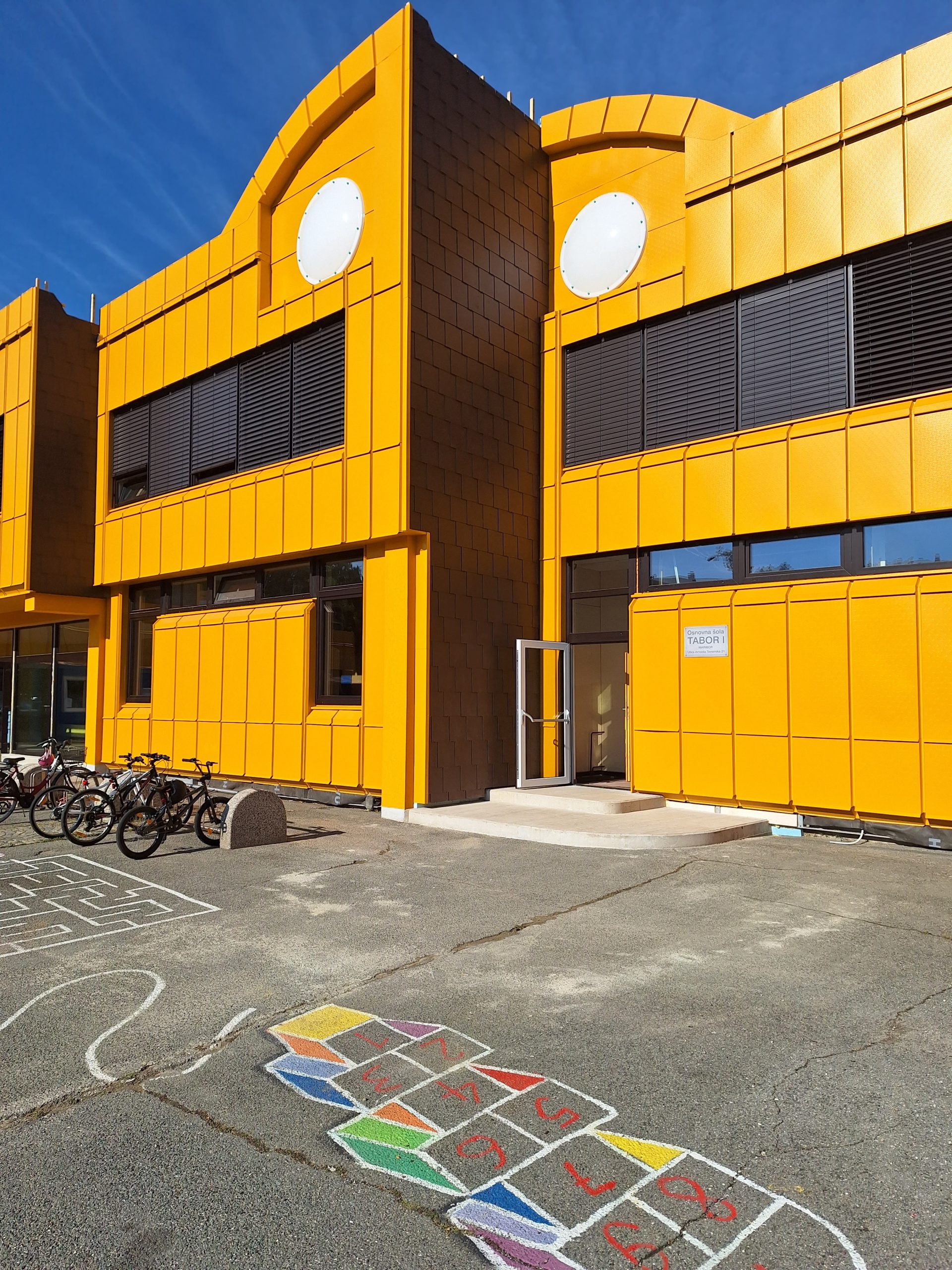
Renovation of Tabor Primary School I
The renovation project is a successful example of energy renovation of a damaged and dilapidated structural modernist architecture from the late 1970s, which had great heritage potential. Fortunately, with multidisciplinary professional cooperation, it was possible to preserve it with a reconstruction intervention that restored the authenticity of the original design by architects Borut Pečenko, Drago Klemenčič and Branko Kraševec.
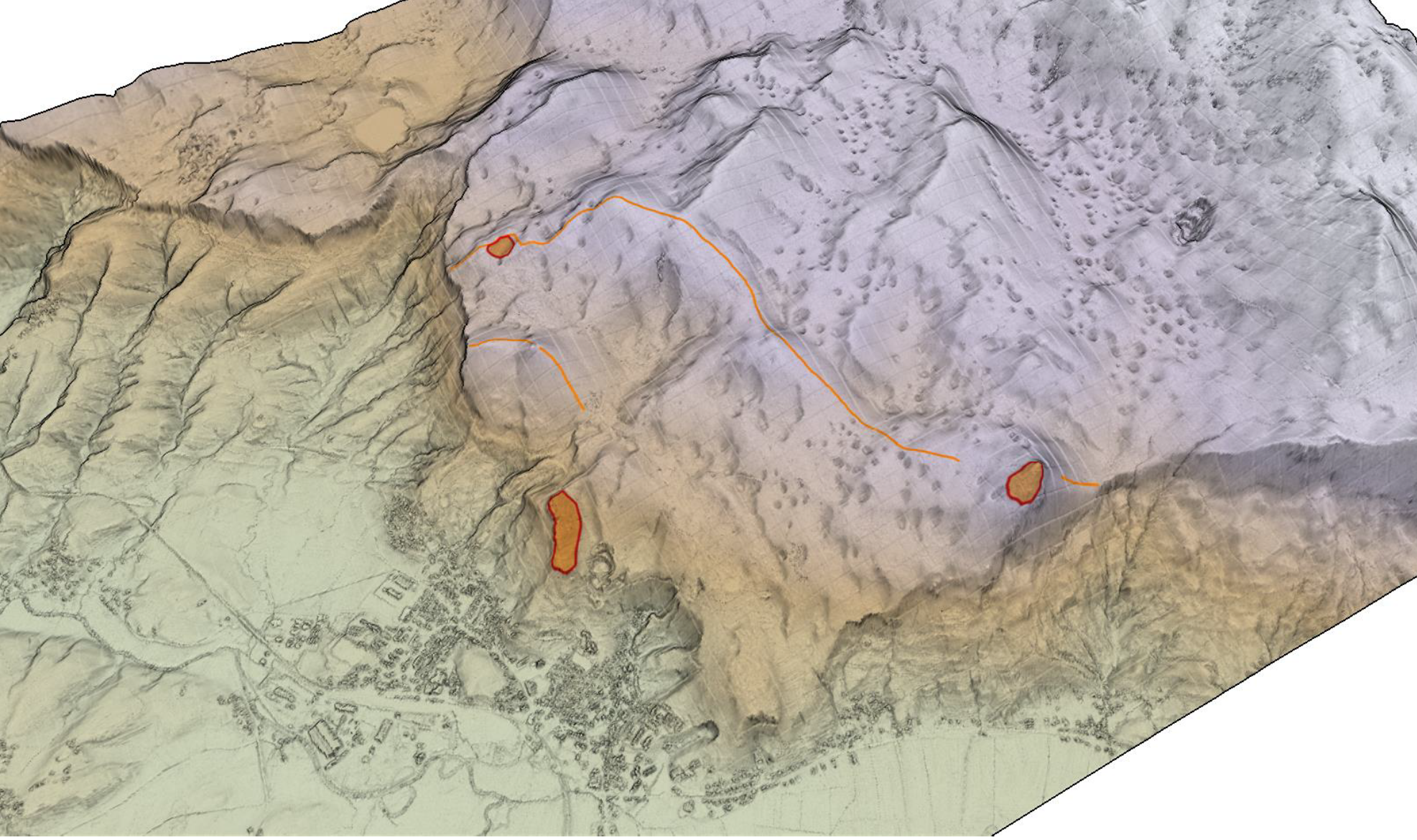
The wall and the ancient cultural landscape
Remote sensing methods such as airborne laser scanning show time and again that the landscape is nowhere empty, everywhere full of traces of past human activity. This multitude of traces presents us with the challenge of how to protect them.
human activities of the past. This multitude of traces presents us with the challenge of how to protect them.
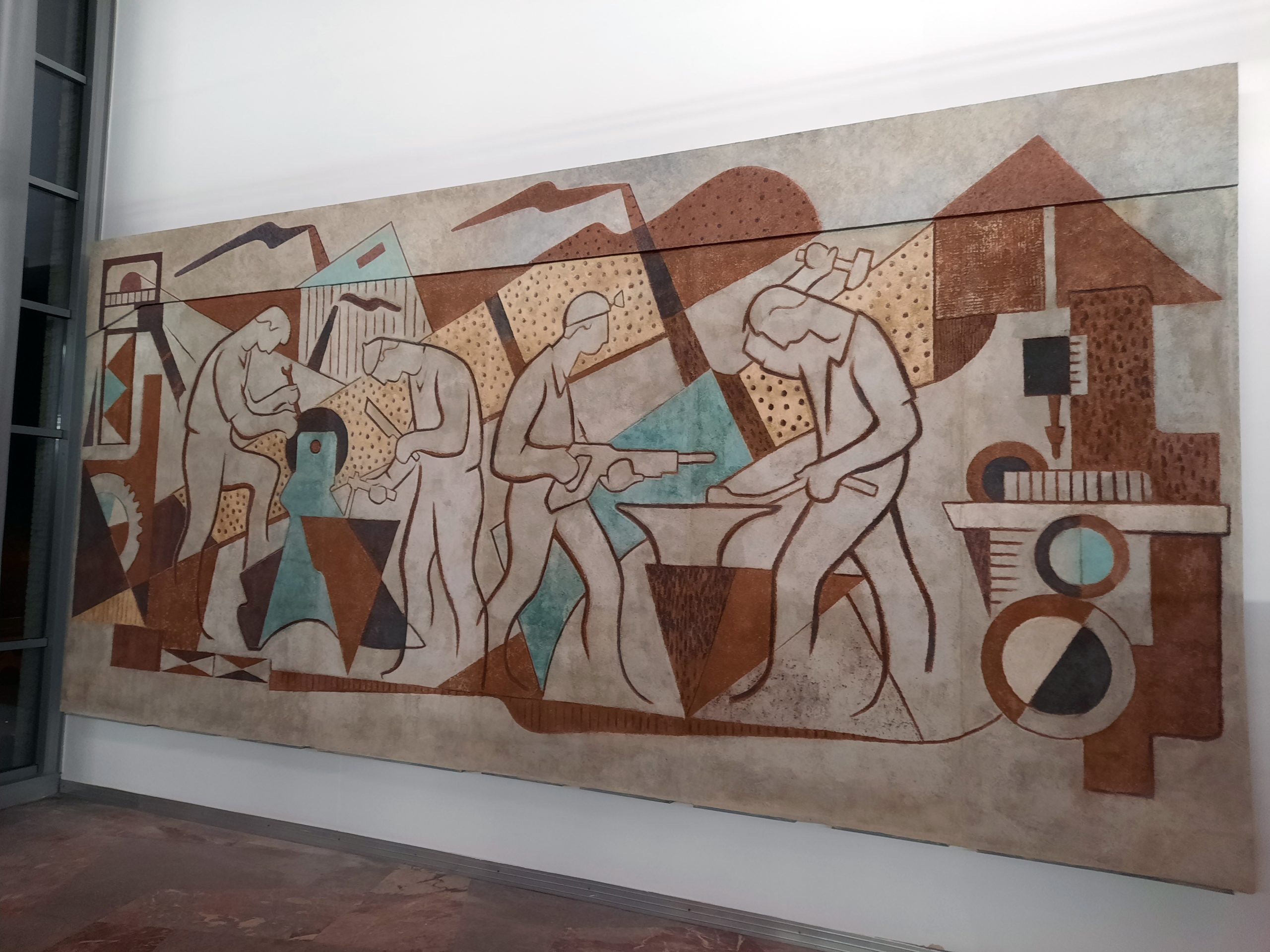
Rescuing graphite
In 2019, an intervention was carried out to record a 1953 print by the painter Maks Kavčič, which was threatened with destruction due to the demolition of the former Trbovlje Machine-Building Factory, and in 2022 the artwork was presented on a new support in the lobby of the Trbovlje Workers' Home.

Rotunda of St. Elijah
In 2022, the deteriorated roofing was replaced, its unplastered exterior was restored by cleaning and re-filling the gaps between the stone blocks with lime mortar, and later the joinery, windows and doors were replaced. The renovation project was co-financed by the Koper Diocese, the Ministry of Culture and the Municipality of Koper. In 2024, the renovation of the former baptistery was completed with the presentation of the interior.
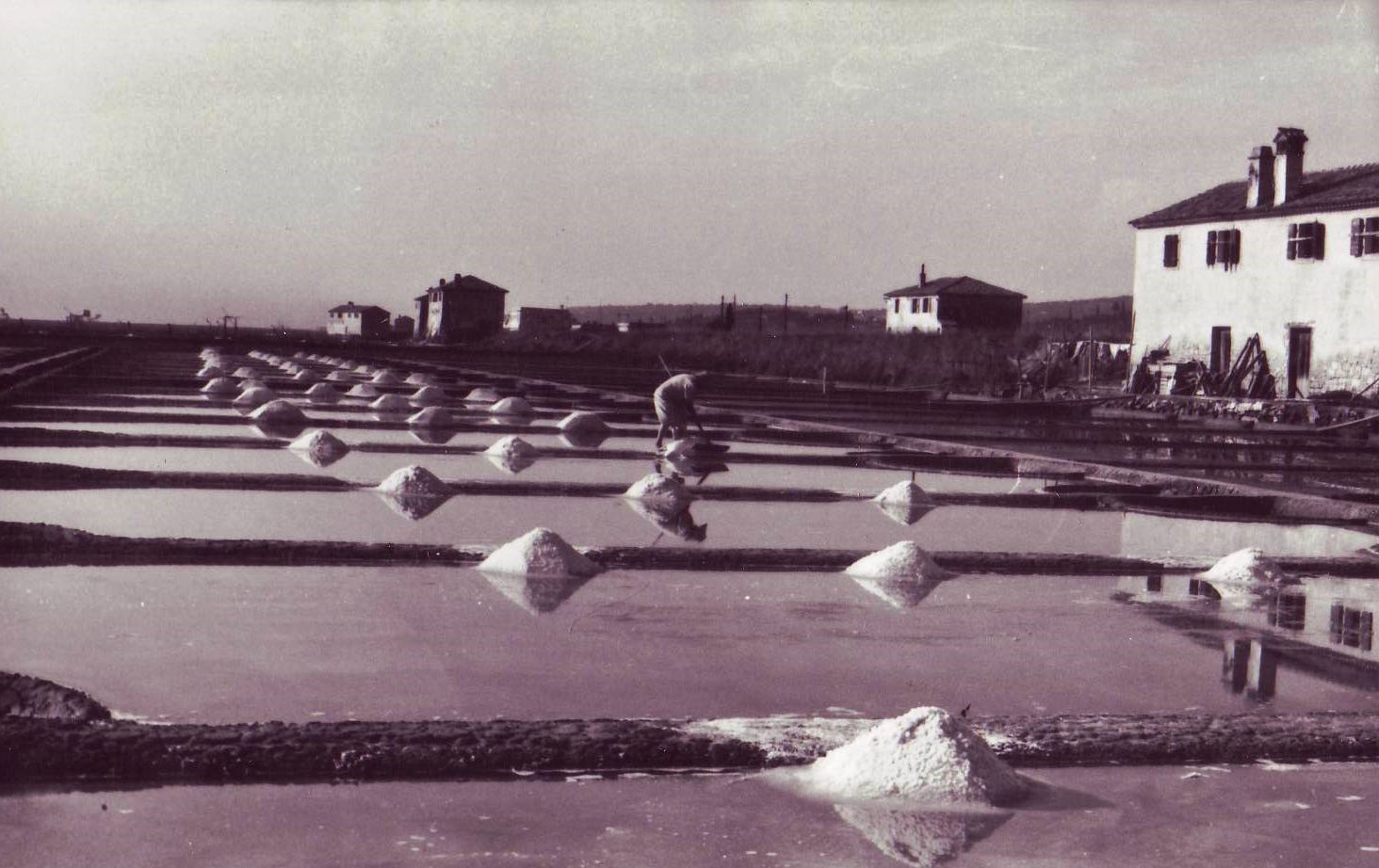
The salterns through time
The Slovenian Institute for the Protection of Culture is actively engaged in a comprehensive set of identification, documentation, study, evaluation and interpretation of the salt pans heritage at several levels. Through fieldwork, the study of material and non-material sources, and cooperation with cultural heritage stakeholders, we pursue the goal of preserving and revitalising the centuries-old heritage of salt pans and salt pans.
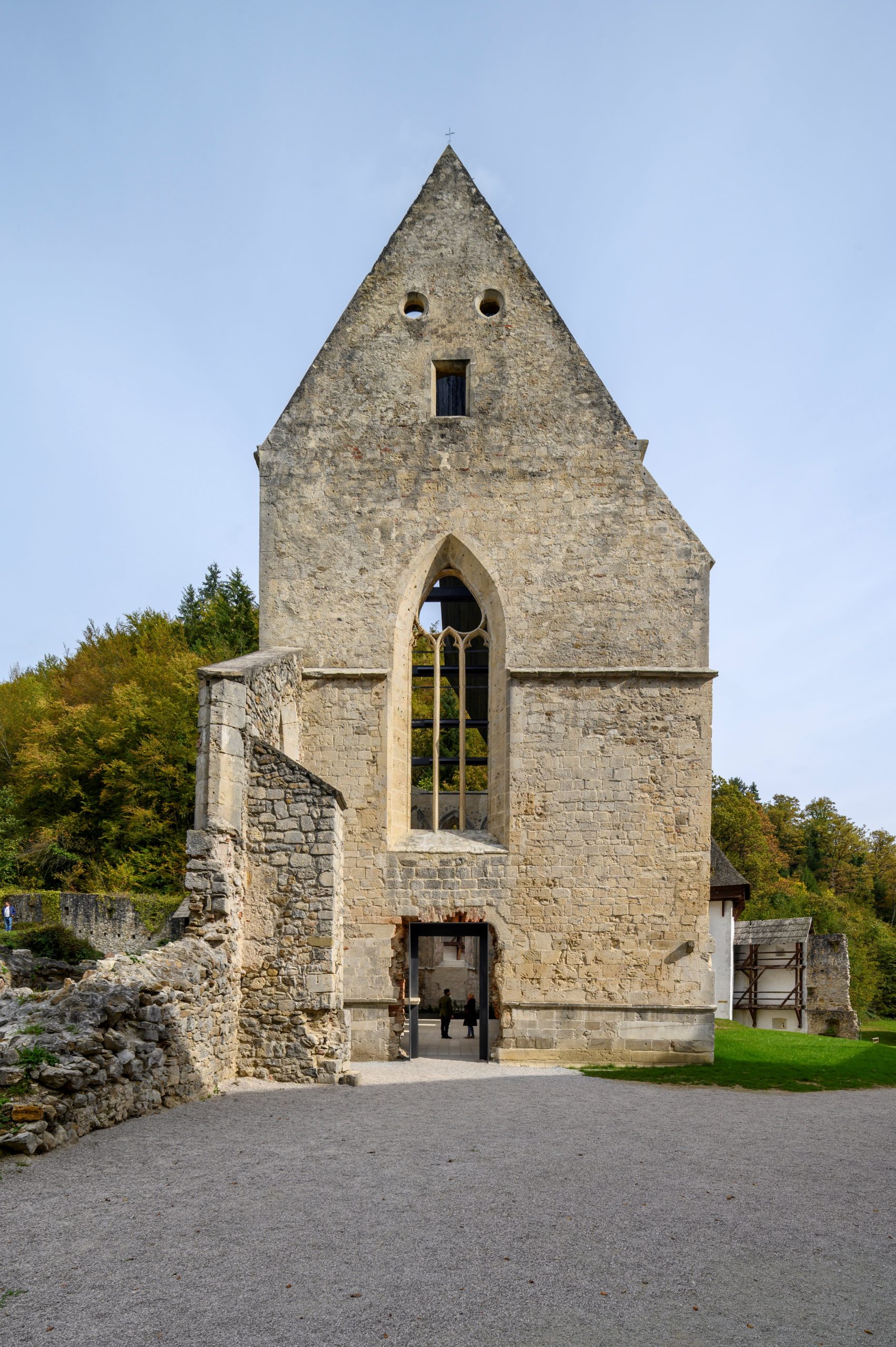
Žiče Carthusian
Žiče Carthusian Monastery is an exceptional monument of monastic architecture that transcends the Slovenian landscape. Its architectural fabric preserves all the main stylistic periods of European art. Its architectural, symbolic, historical, archaeological and landscape values make it of exceptional importance for the country, which is why it was declared a cultural monument of national importance in 2015.
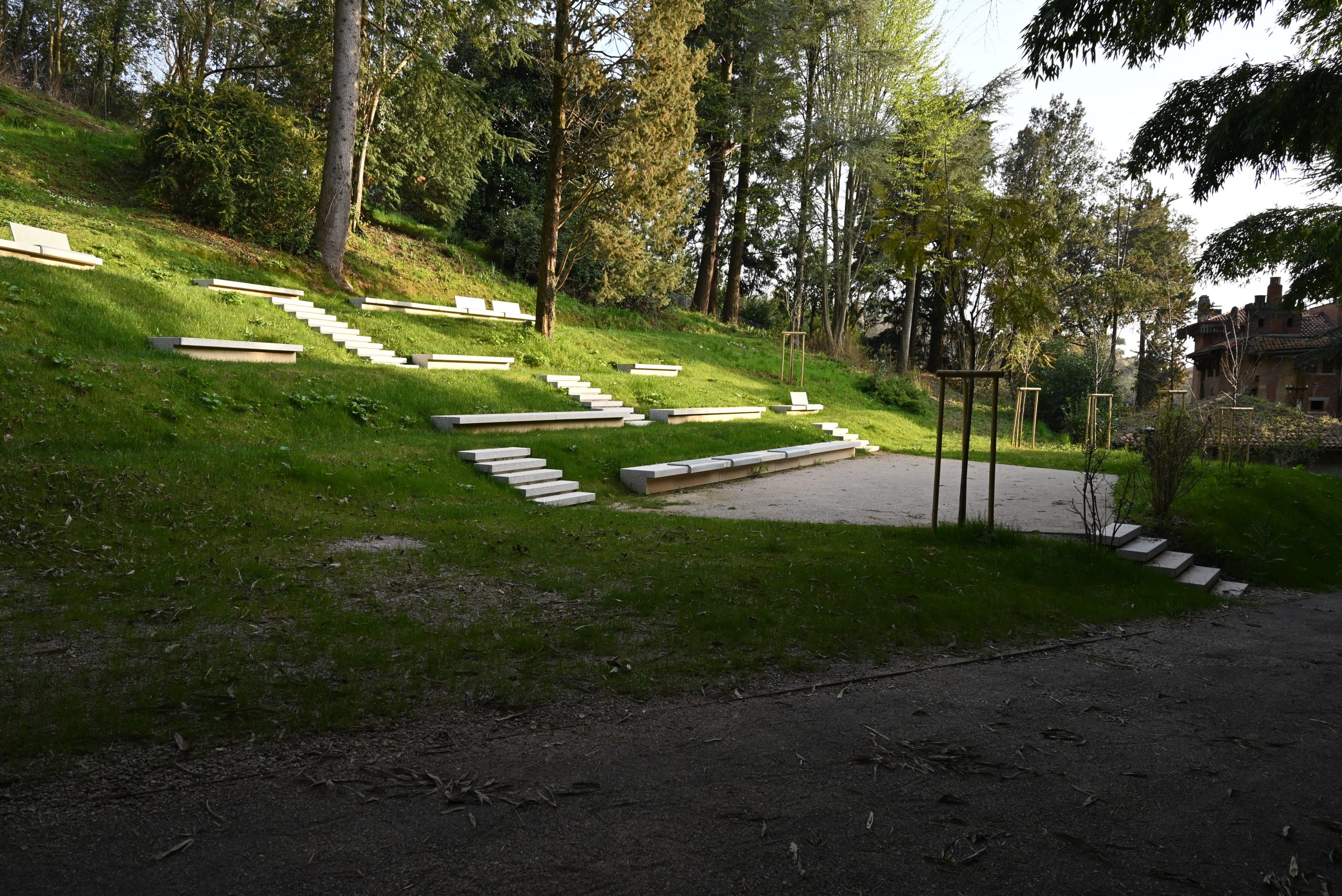
Renovation of the park of Villa Rafut
The renovation has integrated the park areas of Rafutski Park into a coherent whole and transformed them into a public urban park. All the preserved and authentic elements in the park were cleaned and rehabilitated: the preserved mulches, the drainage elements, the steps of the walkway to the Laščak Villa, the rest areas and the retaining walls with reliefs.
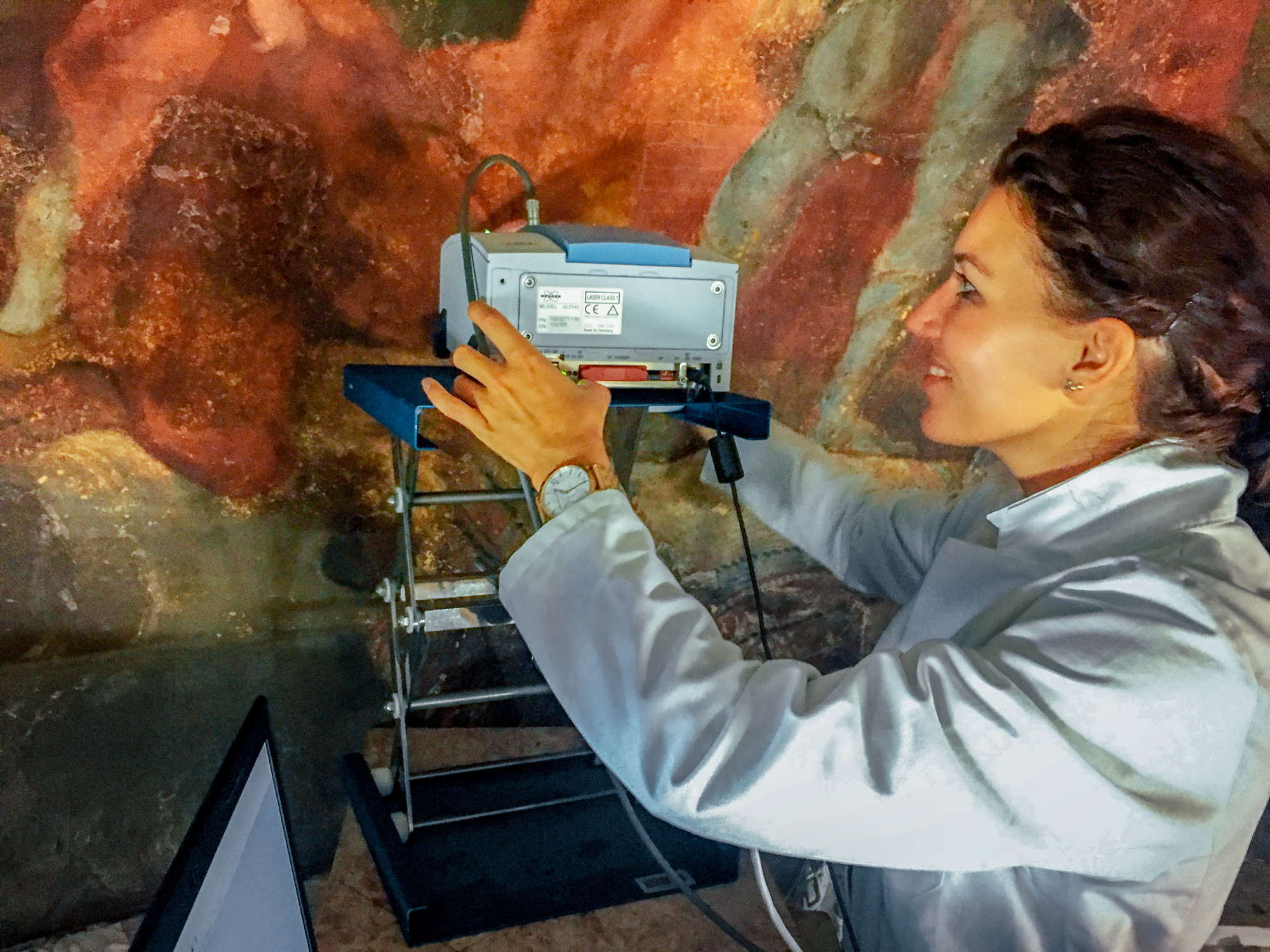
E-RIHS in IPERION HS
Excellent international cooperation has led the Research Institute (RI) to partner in the E-RHIS project - European Research Infrastructure for Heritage Science ( www.e-rihs.eu ). In the framework of the IPERION HS project, we have provided access to research to five projects.
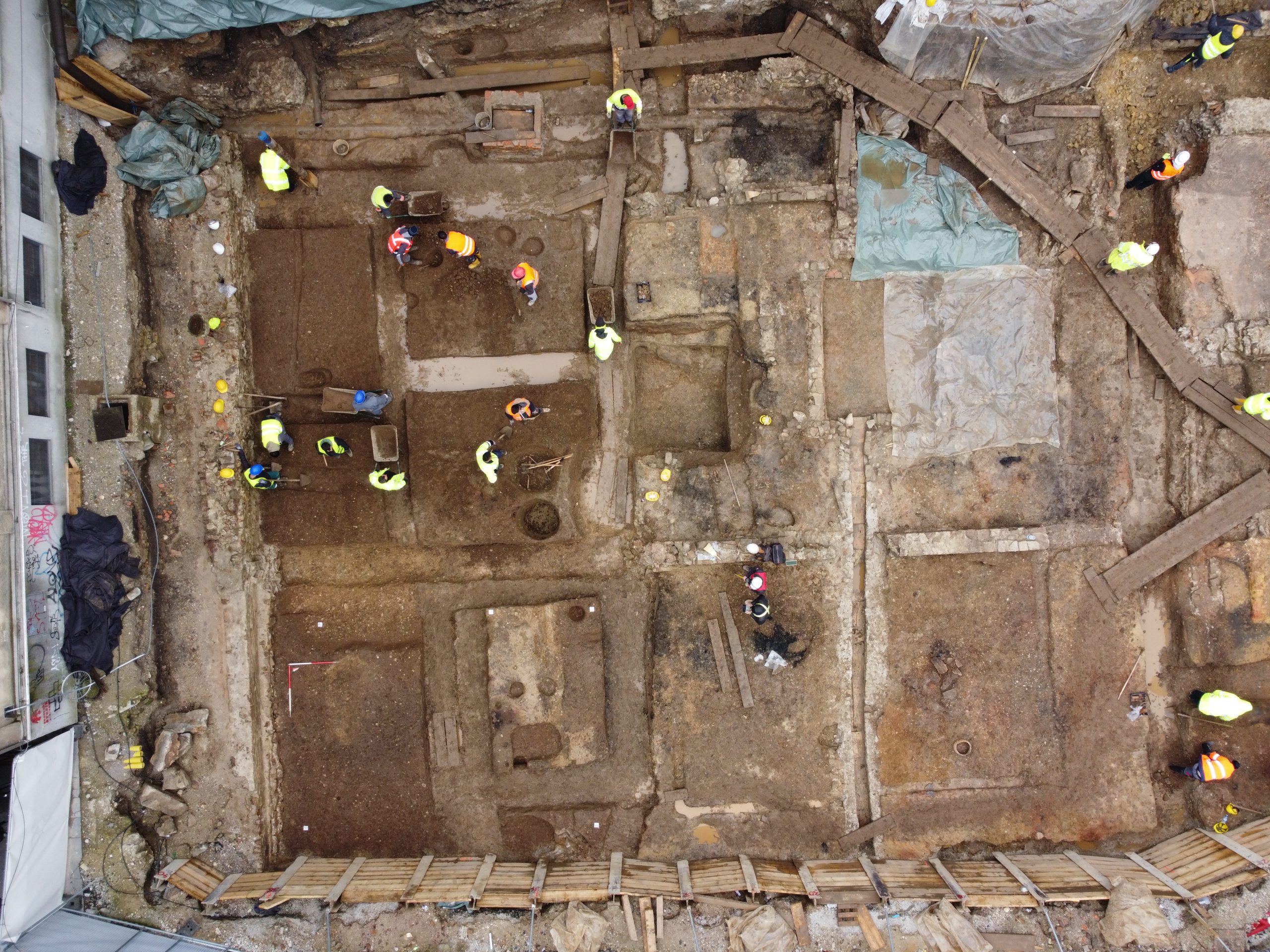
SNG Drama excavations
The results of the excavations exceeded expectations, as the archaeological remains were very well preserved from a depth of 0.70 to 3.30 metres. The oldest layers date back to before the foundation of Emona, when the area was used by Roman soldiers. The protective excavations of the SNG Drama have yielded exceptional data in the area of the eminent space of the city of Emona, north of the Forum, Roman built heritage and fine material culture.

Interventions on organ paintings
Documents of past restoration work, natural history investigations and probing of the darkened layers made it clear that there were two colourfully painted motifs under the darkness. The removal of the darkened varnish was one of the most challenging interventions in terms of ethics, aesthetics and conservation and restoration technology, and was successfully completed in 2018. The newly framed paintings will enrich the art decoration of the Cathedral Church in Koper.
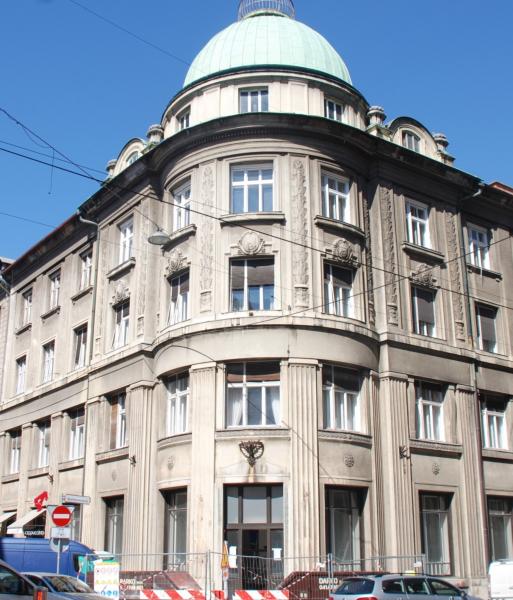
Facade, Beethovnova ulica 7
The restoration of the street façade of the 1920s business and residential palace of the branch of the First Croatian House in Zagreb at 7 Beethovnov Street/Cankarjeva Street 8 in Ljubljana, with its Late Art Nouveau façade, presented a major challenge to the conservation profession. Given the strength of the original materials and the good state of preservation, and based on sample experiments, we decided to clean the façade by sandblasting with a soft medium (Ibix Art Garnet extra fine) and the cleaning result was excellent.
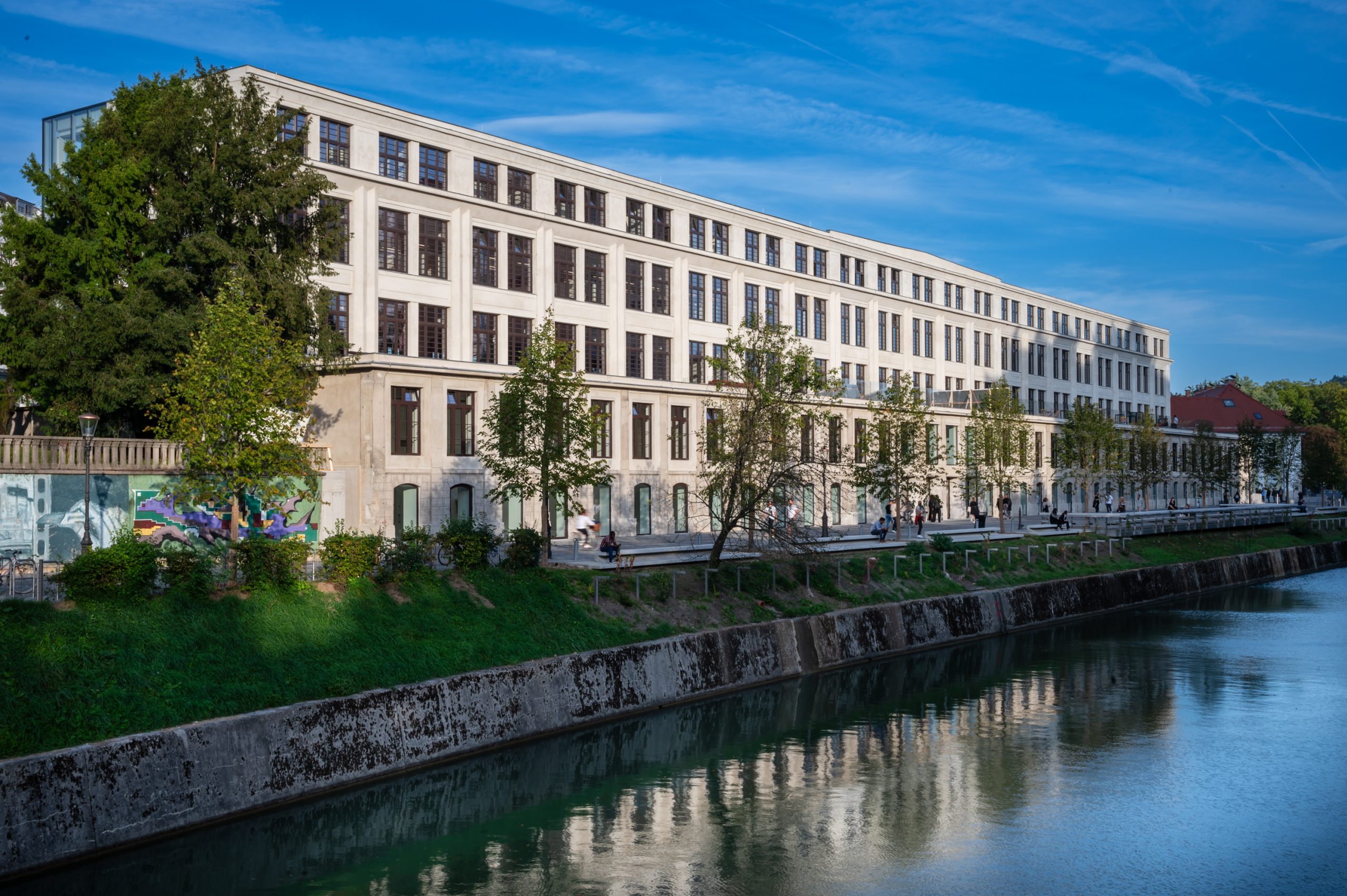
The renovated Rog factory
In the planning process of the redevelopment of the former Rog factory, the integration of the degraded area into the public urban life and the connection of the area with its surroundings, as well as the comprehensive renovation of the factory building, preserving its cultural and conservation values, were essential starting points. After the renovation, the building still expresses its industrial character with its typical large coffered windows and unpainted plasterwork made of prolonged mortar.
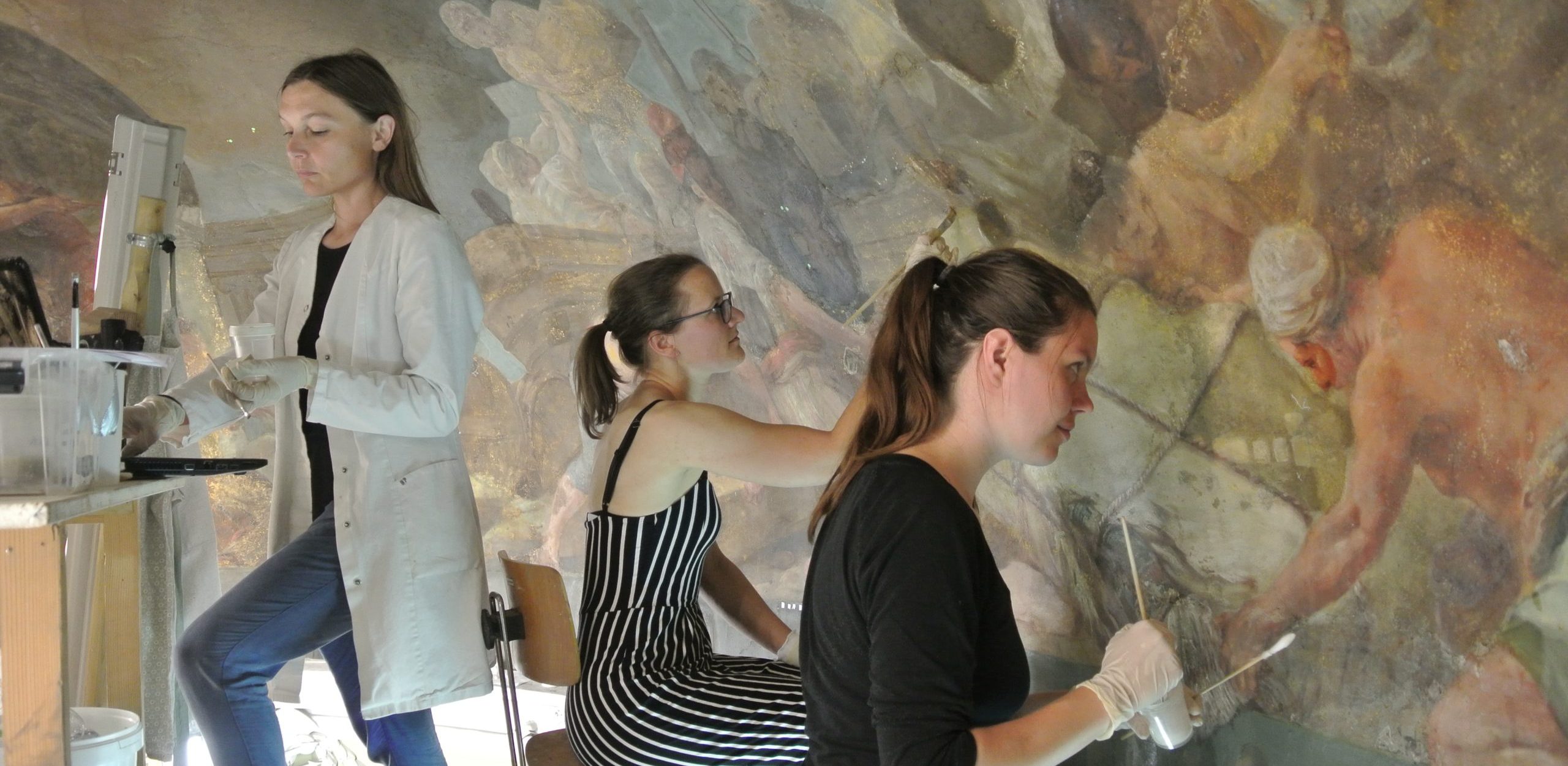
Painting in Gruber Palace
Between 2018 and 2022, under the direction of Martina Lesar Kikelj, an extremely extensive and technically demanding project was carried out on the ceiling painting at the top of the staircase of the Gruber Palace.
Gruber Palace is an art historical monument, as its interior contains works of art of outstanding importance for both Slovenian and European art.

Mary with the Child on the throne and the six saints
In January 2019, when a skilled technical team removed the painting from the wall of the Cathedral of Koper, our team began a period of daily procedures, from removing non-original layers, puttying and retouching to the final varnishing of the painting.
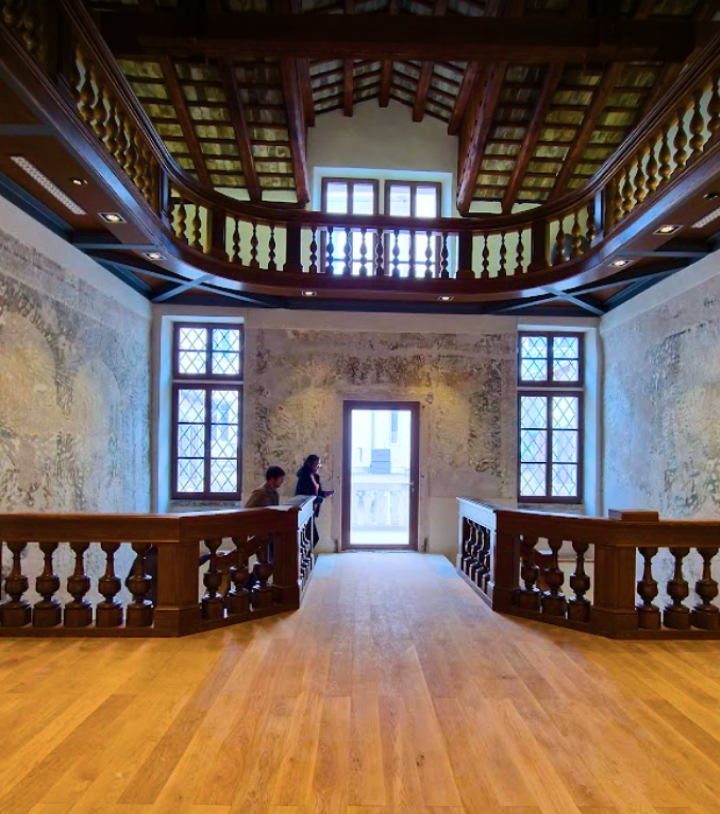
Renovation of the Gravisi Tiepolo Palace
In 2023, the complete renovation of the Gravisi Tiepolo Palace was completed. Kreljeva 6 (Koper) was named after its owners as the Gravisi Tiepolo Palace, the Baseggio Palace and also as the Fighting House. The last name is most likely derived from the activity, as only oral sources can link the palace to the sabre practice hall. There is no doubt that the present palace in Kreljeva Street is an exceptional piece of architecture, unfortunately its garden component is no longer extant, but the building is a testimony to the residential culture of the upper Venetian bourgeoisie of the 17th and 18th centuries.




